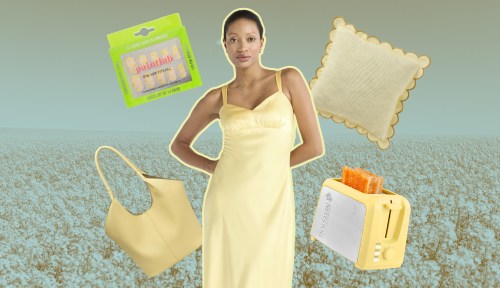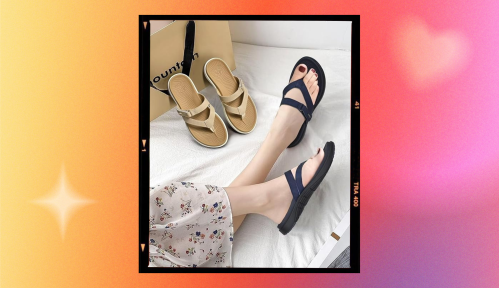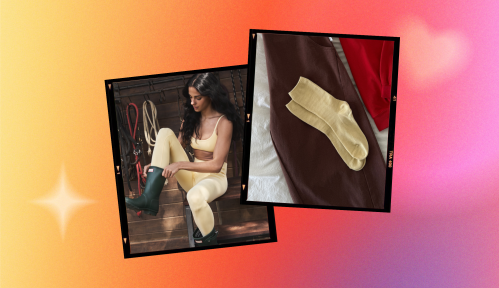Our editors independently select these products. Making a purchase through our links may earn Well+Good a commission
If you’ve ever spent several long minutes admiring the display case at a jewelry store, only to select a necklace or a bracelet that tarnishes a few months later, you’re not alone. Unless you’re a jewelry aficionado, spotting the difference between gold-filled vs. gold-plated jewelry can be tricky, especially if you’re shopping online. As you browse through Amazon or other online retailers, you might just assume that gold is gold right? Not exactly. When it comes to gold-filled vs. gold-plated jewelry, there are actually pretty major distinctions that separate the two, and knowing them may help you shop smarter.
Experts in This Article
owner and founder of Estella Collection
gemologist and co-founder of Love Saro
Even though the terms sounds similar, the main difference to be aware of is that gold-filled jewelry contains a thicker layer of gold than gold-plated jewelry, and is higher quality. “Gold-filled jewelry has a higher gold content by weight compared to gold-plated jewelry, making it more valuable,” says Neeta Patal, owner and founder of Estella Collection. “Gold-plated jewelry is generally cheaper than gold-filled jewelry due to its lower gold content and manufacturing process.” So, those $10 “gold” earrings you found at the mall or in the sale section of your favorite online retailer are likely gold-plated, and therefore won’t last as long as gold-filled or fully gold pieces.
To help you spot the difference next time you’re looking to update your accessories or selecting a gift for your sister, we tapped jewelry experts and gemologists to give us the inside scoop on gold-filled vs. gold-plated jewelry. Keep reading for some professional-grade tips on how to shop for new pieces to add to your collection.
What does gold-filled mean?
Whether you’re shopping for a pair of hoop earrings, a pendant necklace, or a tennis bracelet, understanding the technical terms used to describe different pieces of jewelry can help you make an informed decision as you search for accessories worth investing in. “Gold-filled is a term used for a type of jewelry that consists of a thick layer of gold that is heat- and pressure-bonded to the center core of a base metal, usually high-quality jewelers brass,” says Jess Gardner, founder and owner of Hello Adorn. “The gold layer is usually five percent or 1/20 of the total weight of the item and it is often referred to as “1/20 gold-filled.” You can find gold-filled in 10k, 14k, 18k, and 24k—the higher the karat, the purer the gold on the outer layer.
“The plating process can involve toxic chemicals and is by far the least sustainable option for jewelry.” —Sacha Jarmon, gemologist and co-founder of Love Saro
Additionally, with gold-filled jewelry, the inner material is protected from tarnishing from daily wear. Unlike pure gold, though, this metal is not considered hypoallergenic, cannot be reused or resized, and is not safe from reaction to harsh chemicals including chlorine, according to Sacha Jarmon, gemologist and co-founder of Love Saro. See a few of our favorite gold-filled jewelry options online here.
Best Gold-Filled Jewelry Options

Nashelle 14k-Gold Fill Initial Disc Necklace $65
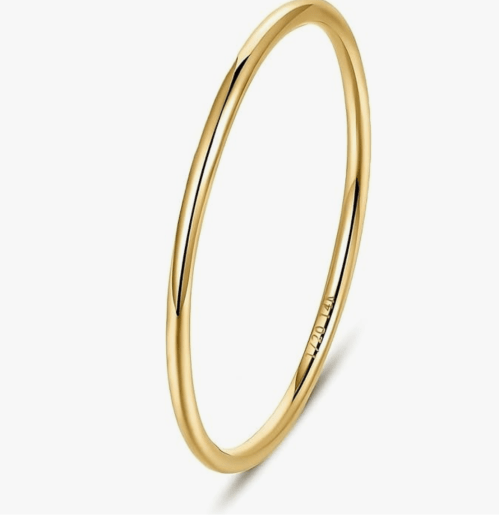
NOKMIT Stackable Gold-Filled Ring $10
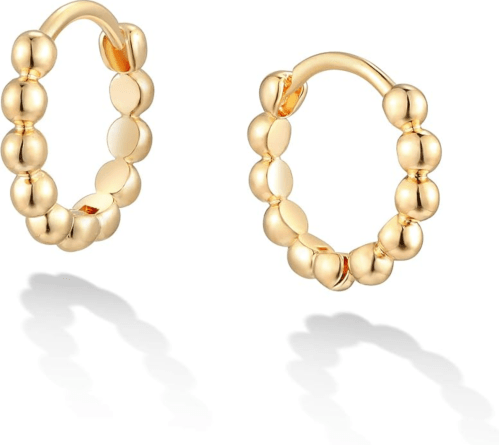
LOYATA 14K Gold-Filled Huggie Hoop Earrings $13
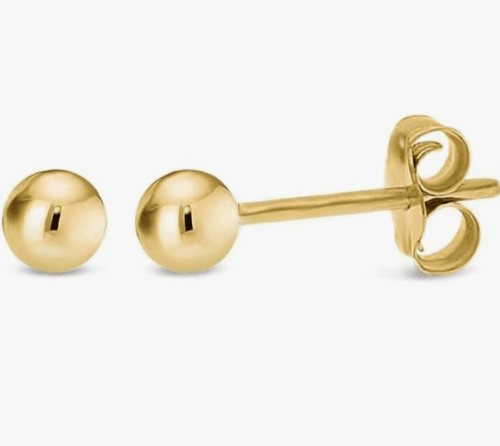
KEZEF 14K Gold-Filled Round Stud Earrings $18
What is gold-plated?
Gold-plated means a process called electroplating was used to apply a thin layer of gold to a base metal—such as brass or copper. “The gold layer in gold-plated jewelry is significantly thinner than in gold-filled jewelry,” says Patal. “Gold-plated jewelry can be plated with 14k, 18k, and 24k gold, but because the layer is so thin, gold-plated jewelry has no gold value,” says Gardner. In terms of price, the gold plating or finishing process involves the least amount of gold and usually results in a lower price point for the customer. “The plating process can involve toxic chemicals and is by far the least sustainable option for jewelry,” adds Jarmon. “A low-price tag for ‘gold’ jewelry typically indicates that the product is plated.” Shop a few gold-plated jewelry options here.
Best Gold-Plated Jewelry Options

SHYMI Pavé Heart Pendant Necklace $90
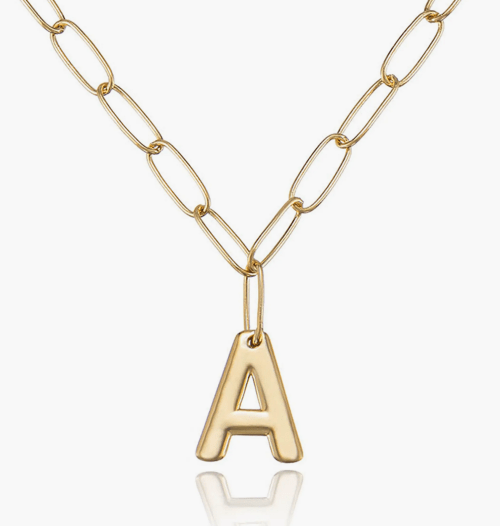
Ettika Gold-Plated Initial Pendant Necklace $40
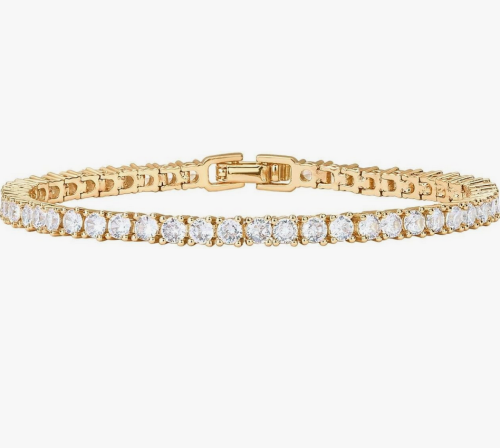
PAVOI 14K Gold-Plated Tennis Bracelet $19
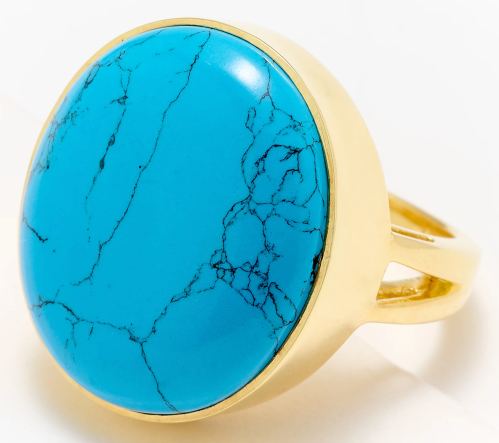
Sophie Blake 14K Gold-Plated Adriana Ring $249
Which is better gold-plated, or gold-filled?
Whether gold-plated vs. gold-filled jewelry highly depends on your expectations, including what circumstances you intend to wear the piece, how durable you want it to be, and whether or not you plan to make it a regular part of your wardrobe. According to Gardner, the layer of gold on gold-filled items is five to 10 times thicker than that produced by regular gold plating which makes gold-filled jewelry is more valuable and lasts much longer than gold-plated jewelry. For this reason, Gold-filled jewelry is also more suitable for everyday wear as it’s less likely to tarnish.
“Gold-plated jewelry is more susceptible to wear and tear over time, including scratching, fading, and dulling of the gold layer,” adds Patal. If you’re on a budget, a piece of gold-plated jewelry might be the better option for your financially in the short-term; however, it isn’t designed to last for a long time, meaning it’s quicker to tarnish and lose its gold luster. This means you’ll likely have to replace the piece relatively soon, potentially costing you more in the long run.
Can you wear gold-filled jewelry every day?
Yes, you can wear gold-filled jewelry every day. According to Gardner, the manufacturing process and the gold weight in gold-fill jewelry make it more durable and equipped for everyday wear. So, if you’re looking for a pair of earrings that can withstand date night, followed by yoga and brunch most weekends, you may want to invest in the more costly gold-filled jewelry to ensure that your jewelry withstands the wear and tear of your day-to-day-life. (Shop a few gold-filled jewelry options ahead.)
Can I shower with gold-filled jewelry?
Yes, you can shower with gold-filled jewelry. “Gold-filled can withstand exposure to water—such as showering—though prolonged exposure to water and harsh chemicals should be avoided to maintain its appearance,” says Patal. That said, it’s important to avoid exposing gold-filled jewelry to harsh chemicals, such as chlorine, and salt water—so it’s best to take these pieces off if you’re headed to the beach or going for a dip in the pool. Additionally, gold-filled jewelry does not do well with strong lotions or if it’s wet for long periods of time, so be careful when moisturizing your skin and be sure to dry your gold-filled pieces immediately after any exposure to water.
Can I shower with gold-plated jewelry?
Similarly, you might be asking yourself, “Can gold-plated jewelry get wet?” Because of it’s thinner coating of goald, it’s not recommended to get gold-plated jewelry wet under any circumstances, as chances are high that exposure to water will lead to chips and tears in the gold plating. This means no showering or swimming while wearing gold-plated pieces. “Gold-plated jewelry should not get wet as water will damage the plating and expose the base layer,” says Gardner, which is exactly how you end up with gold chains and bracelets that are more gold in some sections than in others.
Can you be allergic to gold-filled or gold-plated jewelry?
Yes, it’s possible to be allergic to gold-filled or gold-plated jewelry if you’re allergic to solid gold, but it’s uncommon. “More commonly, people are allergic to brass or other base metals, and that makes allergies to gold-plating quite common because it’s only a matter of time before the gold layer wears off and exposure to the base metal happens,” says Gardner. You’ll want to pay particular attention to the jewelry you purchase especially if you have sensitive skin, though. Keep an eye out for any signs of redness, swelling, or itching after exposure to gold-filled or gold-plated pieces and discontinue use if any of these symptoms occur.
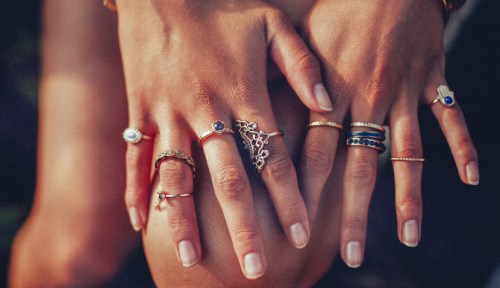
Does gold-filled and gold-plated jewelry tarnish?
Yes, gold-filled and gold-plated jewelry can tarnish if you don’t care for the pieces properly while and after wearing them. “How quickly [gold-plated or gold-filled jewelry] tarnishes depends on the body chemistry of the person wearing it and its exposure to harsh chemicals or water (swimming pools, showering, etc.),” says Jarmon. “If removed prior to water or chemical exposure and well cared for, these materials can maintain their brilliance for years.” For example, if you decide to bring your jewelry with you on a trip, then you’ll want to make sure to have a travel case to hold it in for safekeeping.
How to clean gold-filled jewelry
Once you’ve selected a gold-filled bracelet or pair of earrings to add to your collection, it’s important to understand how to clean gold-filled jewelry so that it can maintain its quality for years to come. According to experts, the best way to clean gold-filled jewelry is with warm water and dish soap. Mix the two in a bowl and let your piece(s) soak for five to 20 minutes. If you have more caked-on residue, opt for a soft-bristled toothbrush and gently scrub at the surface until it comes off, being careful not to brush too hard against the jewelry.
How to clean gold-plated jewelry
Similarly, understanding how to clean gold-plated jewelry is important to maintain the look and lustre of your pieces. According to experts, since gold-plated jewelry is much thinner than gold-filled jewelry you’ll want to try cleaning it with a dry cloth first to see if that does the trick. If that doesn’t work, you’ll want to follow the same steps above to clean your gold-plated jewelry, taking extra care when wiping away any residue as the layer of gold is much thinner on gold-plated jewelry and can be rubbed away far more easily.
Why is there a color variance between gold-filled items?
The color variance between gold-filled items occurs as a result of the purity of the gold used. “Gold with a higher karatage, like 24k, has a richer yellow color than lower karatage golds, like 10k,” says Gardner. “The type of base metal used with the gold can also affect the color. For example, mixing copper with gold creates a darker yellow color, while silver and copper can result in a yellower tone.” This results in lighter or darker shades of gold jewelry that give you a wider variety of options to choose from when you’re making your jewelry selections.
Tips for shopping for gold-plated and gold-filled jewelry
While personal taste is a huge factor to consider when shopping for gold-plated or gold-filled jewelry, there are also a few expert tips to keep in mind to ensure you’re selecting a piece that’s right for you. Namely, consider your budget and whether the seller you’re purchasing from is reliable.
Look for a karat amount that suits your budget
There’s no doubt that the best gold-plated jewelry and gold-filled jewelry can be expensive, especially more intricate pieces like custom birthdate pendants. That said, the price will vary significantly based on the karats, or amount of gold included in each piece. “10k and 14k gold-filled jewelry are popular choices for their affordability and durability,” says Gardner. “18k and 24k gold-filled jewelry are [usually] chosen for their rich colors and high gold content.” So, if you’re looking for a richer shade of gold, 18k or 24k may fit your taste more but also have a larger impact on your wallet.
Look for reputable sellers
While many jewelry retailers will try to convince you that they carry the best gold jewelry, it’s important to consider a seller’s reputation before purchasing from them. If you’re not sure where to start in terms of shopping for gold-filled and gold-plated jewelry, we recommend retailers such as Quince, Blue Nile, Baublebar, and Mejuri.
Final thoughts on gold-filled vs. gold-plated jewelry
When it comes to the difference between gold-filled and gold-plated jewelry, it all boils down to the manufacturing process and how the pieces hold up over time. If you’re shopping for gold-filled or gold-plated jewelry, take your time to shop around and find the piece that’s right for you. And, once you find it, take the proper steps to ensure you’re giving that piece the care and maintenance it deserves so you can get the most out of your purchase and (hopefully) wear it for years to come.
Sign up for the Well+Good SHOP Newsletter
Get exclusive deals on wellness, beauty, fitness, and food products that have been hand-picked by our editors.
Got it, you've been added to our email list.







